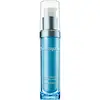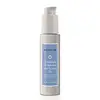What's inside
What's inside
 Key Ingredients
Key Ingredients

 Benefits
Benefits

 Concerns
Concerns

No concerns
 Ingredients Side-by-side
Ingredients Side-by-side

Water
Skin ConditioningGlycerin
HumectantDimethicone
EmollientButylene Glycol
HumectantNeopentyl Glycol Diheptanoate
EmollientAluminum Starch Octenylsuccinate
AbsorbentIsododecane
EmollientDimethiconol
EmollientAmmonium Acryloyldimethyltaurate/Vp Copolymer
Ethylhexylglycerin
Skin ConditioningBenzyl Alcohol
PerfumingSodium Lactate
BufferingCetearyl Olivate
Bisabolol
MaskingChlorphenesin
AntimicrobialSorbitan Olivate
EmulsifyingSodium PCA
HumectantParfum
MaskingSodium Hyaluronate
HumectantAcrylates/C10-30 Alkyl Acrylate Crosspolymer
Emulsion StabilisingSorbitol
HumectantChondrus Crispus Extract
Skin ConditioningSodium Hydroxide
BufferingProline
Skin ConditioningPortulaca Oleracea Extract
Skin ConditioningPropylene Glycol
HumectantCitric Acid
BufferingMagnesium Aspartate
Skin ConditioningZinc Gluconate
Skin ConditioningCopper Gluconate
Skin ConditioningWater, Glycerin, Dimethicone, Butylene Glycol, Neopentyl Glycol Diheptanoate, Aluminum Starch Octenylsuccinate, Isododecane, Dimethiconol, Ammonium Acryloyldimethyltaurate/Vp Copolymer, Ethylhexylglycerin, Benzyl Alcohol, Sodium Lactate, Cetearyl Olivate, Bisabolol, Chlorphenesin, Sorbitan Olivate, Sodium PCA, Parfum, Sodium Hyaluronate, Acrylates/C10-30 Alkyl Acrylate Crosspolymer, Sorbitol, Chondrus Crispus Extract, Sodium Hydroxide, Proline, Portulaca Oleracea Extract, Propylene Glycol, Citric Acid, Magnesium Aspartate, Zinc Gluconate, Copper Gluconate
Water
Skin ConditioningGlycerin
HumectantPropanediol
SolventHydrolyzed Hyaluronic Acid
HumectantSodium Hyaluronate
HumectantApricot Kernel Oil Polyglyceryl-6 Esters
EmollientPolyglyceryl-6 Oleate
EmulsifyingCaprylyl Glycol
EmollientPolyglyceryl-10 Oleate
Skin ConditioningAcrylates/C10-30 Alkyl Acrylate Crosspolymer
Emulsion StabilisingMagnolol
AntioxidantKaempferol
AntioxidantTetrahexyldecyl Ascorbate
AntioxidantGlycolipids
Skin ConditioningGlycine Soja Sterols
EmollientTocopheryl Acetate
AntioxidantPhenoxyethanol
PreservativeSorbitan Palmate
EmollientPotassium Sorbate
PreservativeSodium Hydroxide
BufferingGlyceryl Polyacrylate
Xanthan Gum
EmulsifyingHexylene Glycol
EmulsifyingWater, Glycerin, Propanediol, Hydrolyzed Hyaluronic Acid, Sodium Hyaluronate, Apricot Kernel Oil Polyglyceryl-6 Esters, Polyglyceryl-6 Oleate, Caprylyl Glycol, Polyglyceryl-10 Oleate, Acrylates/C10-30 Alkyl Acrylate Crosspolymer, Magnolol, Kaempferol, Tetrahexyldecyl Ascorbate, Glycolipids, Glycine Soja Sterols, Tocopheryl Acetate, Phenoxyethanol, Sorbitan Palmate, Potassium Sorbate, Sodium Hydroxide, Glyceryl Polyacrylate, Xanthan Gum, Hexylene Glycol
 Reviews
Reviews

Ingredients Explained
These ingredients are found in both products.
Ingredients higher up in an ingredient list are typically present in a larger amount.
Acrylates/C10-30 Alkyl Acrylate Crosspolymer is a synthetic polymer. It is used to thicken and improve the texture of products. Due to its properties, it can prevent water and oil ingredients from separating.
Glycerin is already naturally found in your skin. It helps moisturize and protect your skin.
A study from 2016 found glycerin to be more effective as a humectant than AHAs and hyaluronic acid.
As a humectant, it helps the skin stay hydrated by pulling moisture to your skin. The low molecular weight of glycerin allows it to pull moisture into the deeper layers of your skin.
Hydrated skin improves your skin barrier; Your skin barrier helps protect against irritants and bacteria.
Glycerin has also been found to have antimicrobial and antiviral properties. Due to these properties, glycerin is often used in wound and burn treatments.
In cosmetics, glycerin is usually derived from plants such as soybean or palm. However, it can also be sourced from animals, such as tallow or animal fat.
This ingredient is organic, colorless, odorless, and non-toxic.
Glycerin is the name for this ingredient in American English. British English uses Glycerol/Glycerine.
Learn more about GlycerinSodium Hyaluronate is hyaluronic acid's salt form. It is commonly derived from the sodium salt of hyaluronic acid.
Like hyaluronic acid, it is great at holding water and acts as a humectant. This makes it a great skin hydrating ingredient.
Sodium Hyaluronate is naturally occurring in our bodies and is mostly found in eye fluid and joints.
These are some other common types of Hyaluronic Acid:
Learn more about Sodium HyaluronateSodium Hydroxide is also known as lye or caustic soda. It is used to adjust the pH of products; many ingredients require a specific pH to be effective.
In small amounts, sodium hydroxide is considered safe to use. However, large amounts may cause chemical burns due to its high alkaline.
Your skin has a natural pH and acid mantle. This acid mantle helps prevent harmful bacteria from breaking through. The acid mantle also helps keep your skin hydrated.
"Alkaline" refers to a high pH level. A low pH level would be considered acidic.
Learn more about Sodium HydroxideWater. It's the most common cosmetic ingredient of all. You'll usually see it at the top of ingredient lists, meaning that it makes up the largest part of the product.
So why is it so popular? Water most often acts as a solvent - this means that it helps dissolve other ingredients into the formulation.
You'll also recognize water as that liquid we all need to stay alive. If you see this, drink a glass of water. Stay hydrated!
Learn more about Water